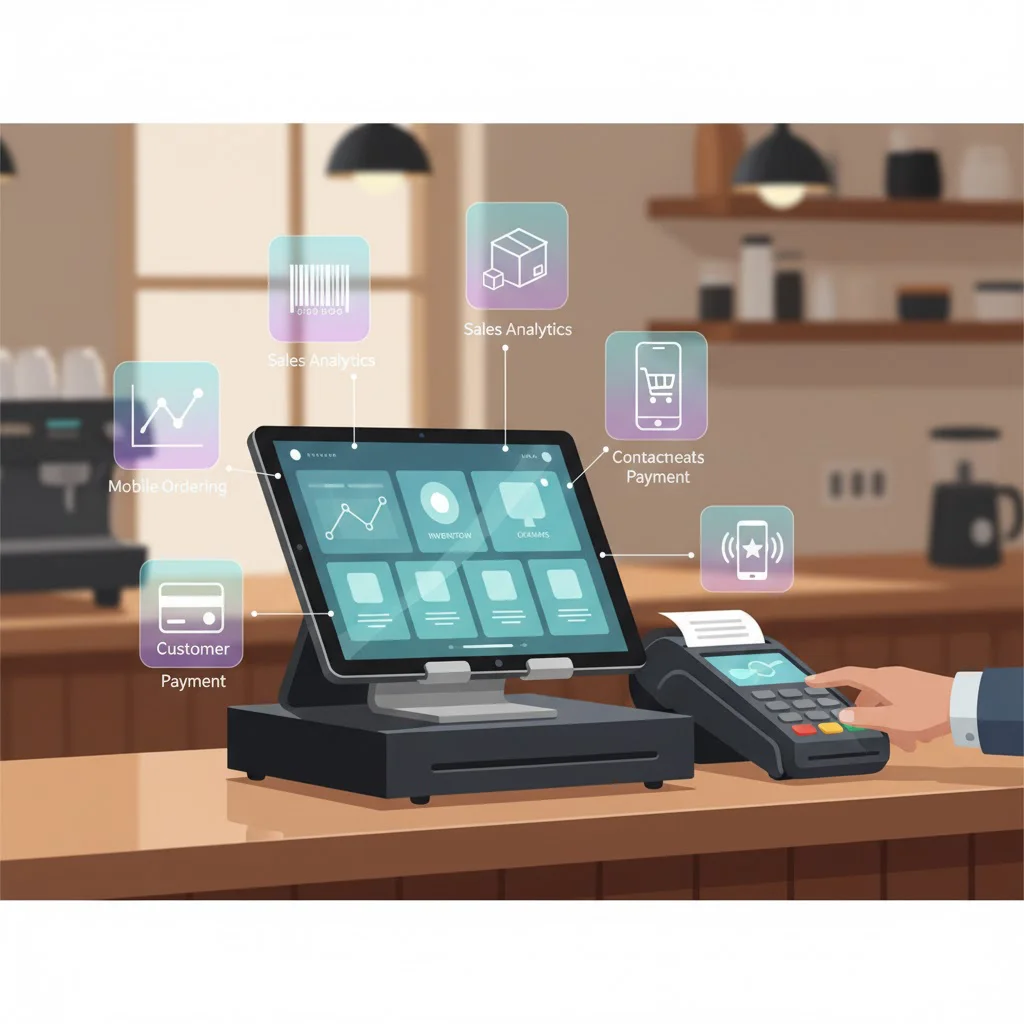The restaurant and café industry across Malaysia, Singapore, and Southeast Asia is rapidly evolving, with technology at the forefront of operational transformation. The Point-of-Sale (POS) system is no longer a mere transaction tool—it has become the operational backbone of modern F&B businesses. Despite this, numerous cafés and restaurants continue to rely on outdated cash registers or legacy POS setups, unable to meet current expectations for cashless payments, delivery integration, and real-time analytics. Operating with such outdated systems in 2025 is akin to using a flip phone to run a digital marketing campaign—it simply cannot keep pace with consumer demands. This guide explores the innovations shaping the future of POS systems and outlines strategies to leverage them for operational efficiency, profitability, and enhanced customer experiences.
Cloud-Based and Mobile POS Systems – The New Standard
Traditional, on-premise POS systems are increasingly being replaced by cloud-based and mobile POS (mPOS) solutions, which offer unmatched flexibility and scalability for modern cafés and restaurants.
Benefits of Cloud-Based POS:
- Accessible from smartphones, tablets, or laptops, allowing remote management of multiple outlets.
- Automatic software updates reduce IT overhead and ensure feature parity across locations.
- Real-time sales and inventory analytics provide actionable insights for decision-making.
- Secure data backups stored in the cloud prevent losses from hardware failure.
Advantages of Mobile POS (mPOS):
- Enables tableside order-taking using tablets or smartphones.
- Portable card readers and QR code payments accelerate checkouts.
- Reduces queue times, enhancing customer satisfaction.
- Ideal for flexible operations in cafés, food trucks, or pop-up restaurants.
Impact: Restaurants can now scale operations seamlessly across multiple locations without being tethered to fixed counters, enhancing operational efficiency and customer satisfaction.
-
AI and Data Analytics – Smarter Operational Decisions
Next-generation POS systems integrate AI-driven analytics, transforming data into strategic insights. These systems do more than process transactions—they predict, optimize, and guide operations in real time.
AI-Powered Features:
- Predict demand fluctuations based on weather, holidays, or historical sales patterns.
- Optimize staff scheduling during peak hours for efficiency and cost savings.
- Automate menu adjustments to promote high-margin items and minimize waste.
- Personalize loyalty rewards based on individual customer behavior.
Business Benefits: AI-enabled POS systems improve profitability, minimize resource waste, and enhance personalized customer experiences.
Example: A POS system forecasting increased demand for durian cheesecake during a local festival ensures stock is prepared, maximizing sales and reducing shortages.
-
Multi-Channel Integration – Centralized Operations
Managing dine-in, takeaway, and online orders separately is inefficient and error-prone. Integrated POS solutions consolidate all channels into a single platform, streamlining operations.
Features of Multi-Channel Integration:
- Simultaneous processing of dine-in and online orders.
- Seamless integration with delivery apps like GrabFood, FoodPanda, and Deliveroo.
- POS-connected online ordering platforms for websites and mobile apps.
- Automatic syncing with accounting, payroll, and CRM systems.
Impact: A unified dashboard reduces operational errors, eliminates redundant data entry, and simplifies multi-outlet management.
-
Contactless and Digital Payments – Convenience as Standard
Consumers in Malaysia and Singapore are rapidly adopting cashless payment solutions. Modern POS systems must support multiple digital payment methods to stay competitive.
Digital Payment Capabilities:
- Accept NFC cards, e-wallets (Touch ‘n Go, Boost, GrabPay), and QR code payments.
- Auto-link transactions to loyalty rewards for seamless customer experiences.
- Accelerate checkout while reducing human error in cash handling.
- Advanced encryption ensures secure payment processing.
Impact: Cashless transactions enhance hygiene, speed up service, and meet evolving customer expectations.
-
Enhanced Customer Engagement – Turning Transactions into Relationships
Modern POS systems incorporate CRM tools to deliver personalized dining experiences, fostering customer loyalty and repeat visits.
Engagement Features:
- Loyalty points and automated reward programs.
- Personalized menu suggestions (e.g., “Your usual latte with oat milk?”).
- Real-time feedback collection via receipts or integrated apps.
- Email and SMS marketing automation linked to POS data.
Impact: Leveraging customer data for targeted engagement increases retention, enhances lifetime value, and drives repeat business.
-
Sustainability and Efficiency – The Green Shift
Environmental consciousness is becoming a key differentiator. Future POS systems help businesses implement sustainable practices while optimizing efficiency.
Eco-Friendly POS Features:
- Monitor food waste and suggest purchasing adjustments.
- Recommend eco-friendly packaging for delivery orders.
- Track energy consumption and flag inefficiencies.
- Generate sustainability reports for compliance and branding.
Impact: Reduces operational costs, minimizes waste, and appeals to environmentally conscious consumers.
Key Takeaways – Preparing for the Future
The next-generation POS system is a comprehensive operational hub:
- Cloud and Mobile POS: Manage outlets anytime, anywhere.
- AI Analytics: Enable smarter, data-driven decisions.
- Multi-Channel Integration: Centralize dine-in, takeaway, and online orders.
- Digital Payments: Accelerate transactions and improve convenience.
- Customer Engagement Tools: Enhance loyalty and personalization.
- Sustainability Features: Reduce waste and reinforce eco-friendly branding.
Businesses that adopt these technologies early will outperform competitors, improve operational efficiency, and maximize profitability.





